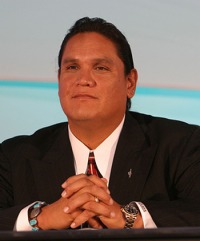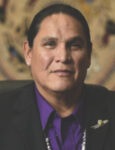
For many Americans-especially those who know little about Native American history-it is difficult to understand the depth of poverty that existed throughout Indian Country and continues to persist in some areas today. On most reservations, plumbing and electricity were unattainable luxuries. Tribal governments struggled to provide basic services such as education, health care, fire and police services. Unemployment rates on reservations routinely topped 80 percent.
One of the most significant turning points for tribal governments took place just two decades ago when two California tribes fought for their sovereign right to create economic opportunity on the reservation. In 1987, the United States Supreme Court ruled in California v. Cabazon Band of Mission Indians and Morongo Band, that Indian tribes have “sovereignty over their members and their territory,” and that states have no right to interfere with tribal self-government. The high-stakes bingo operations run by these two tribes were protected aspects of tribal sovereignty because in the words of the court they “are generating value on the reservations through activities in which they have a substantial interest and they dedicate bingo revenues to promoting the health, education, and general welfare of the tribal members.”
The decision in Cabazon represents a significant milestone for Indian Country and is critical to the achievements we are seeing today. It offered tribal governments hope and an opportunity to lift up their economies after two centuries of government policies that sought to terminate tribal governments. This decision lit the fuse for a brand new wave of economic development for Indian nations.
Unfortunately, following the Supreme Court’s decision, California and other states turned to Congress in order to limit the reach of the Supreme Court’s ruling.
Barely a year later, Congress passed the Indian Gaming Regulatory Act (IGRA) in 1988. While the law has become synonymous with solidifying and protecting tribes’ future in gaming, make no mistake about it; IGRA is a diminishment of tribal sovereignty. Tribes were forced to surrender hard-fought gains in self-government through the collective will of Congress and the states.
The passage of IGRA also did not mark the end of disputes or controversy between states and tribes. In fact, challenges continually occur on both state and federal levels. In 1992, the Supreme Court ruled against the Seminole Tribe of Florida and invalidated IGRA’s mandate that states must negotiate gaming compacts in good faith.
Recently, the Fifth Circuit Court in Texas ruled against the Kickapoo Tribe and U.S. Department of Interior over Class III compacting rights. Due to the Seminole decision, the state of Texas has been able to stall compact negotiations with the Kickapoos and other Texas tribes.
The Kickapoo Tribe sought to invoke the Interior’s alternative compacting procedures and offer gaming as an economic opportunity for its tribal members. However, the Court found the Interior’s alternative compacting regulations invalid, leaving the Kickapoo Tribe without an adequate remedy to challenge the state of Texas’ reluctance to enter into good faith compact negotiations.
The National Indian Gaming Association and its member tribes stand united in their support for all tribes that have been wronged for years as a result of the Seminole decision. The Kickapoo Tribe and tribes in other states trying to negotiate compacts, are deprived of a right that they have retained since long before the United States became a country: the right to engage in economic development as a sovereign government.
However, one thing is for certain: since the Cabazon ruling, states that have gaming compacts with tribes have benefitted greatly.
According to NIGA’s 2007 preliminary Economic Impact Report, tribal gaming is not only continuing to succeed, it has contributed to the economic health of states, counties and local municipalities.
Nationwide last year, 223 Indian tribes in 28 states used Indian gaming revenues to create new jobs, fund essential government services and rebuild communities. This is just a snapshot of what tribal governments generated in 2007:
- $26 billion in gross revenue from Indian gaming (before wages, operating expenses, cost of goods and services, capital costs, etc. are paid)
- 700,000 jobs nationwide for American Indians and our neighbors (direct and indirect jobs created by Indian gaming’s economic multiplier effect)
- $8.9 billion in federal taxes and revenue savings (including employer and employee social security taxes, income taxes, excise taxes, and savings on unemployment and welfare payments)
- $2.5 billion in state taxes, revenue sharing, and regulatory payments (including state income, sales and excise taxes, regulatory payments and revenue sharing pursuant to tribal-state compacts)
- More than $100 million in payments to local governments
In a similar study released recently, researchers at the University of California Riverside released a report that Indian gaming in California significantly reduces poverty and improves employment, incomes and educational attainment in communities near the casinos, particularly in the poorest regions of the state.
The report, “Lands of Opportunity: Social and Economic Effects of Tribal Gaming on Localities,” was presented in the September issue of Policy Matters. Authors of the report found that gaming operations have beneficial effects on the tribes, on communities near gaming reservations and on California generally.
Because tribal casinos are generally located in poorer regions of the state, economic activity resulting from tribal government gaming tends to concentrate employment and other benefits in counties that need economic development the most, the study said.
In California, tribes opened at least 25 casinos in the early 1990s, not long after Congress passed the IGRA. Today, 57 tribes operate casinos in the state. Analysis of U.S. Census data reveals the benefits have been significant. According to the University of California Riverside study:
- California’s gaming tribes experienced a 55 percent increase in average income per capita between 1990 and 2000, compared to a 15 percent increase on non-gaming reservations. The average income per capita on California’s gaming reservations was $12,526 in 2000, only 53 percent of the average income for all Americans, the researchers found.
- The number of families living in poverty on the state’s gaming reservations dropped from 36 percent in 1990 to 26 percent in 2000, the researchers found. Even so, poverty rates were more than twice as high as the state and national averages.
This study, like others, demonstrates that Indian gaming has improved both social and economic results on tribal lands and their surrounding areas. Each and every day, tribes across this country create more jobs and fuel the economies of the states and the nation while building new schools, health clinics, housing, police and fire protection, as well as the many infrastructure needs of their communities.
As we acknowledge the 20th anniversary of the Cabazon decision, we are reminded that the decision merely upheld tribes’ inherent sovereign right to govern their internal affairs. This is a right that our ancestors fought and died for and that commitment is embodied in the constitution and our treaties. Our tribal citizens, elders and ancestors would expect nothing less than for the current generation to hold the federal government to their word.
As Indian Country moves forward, we are determined to continue building upon the positive economic gains we have made since Cabazon while continuing to defend our sovereignty and right to tribal self-government. We hope to make good on these promises so that our future generations have the same opportunities to improve the lives of not just our tribal citizens, but of all citizens living in this great country.


















